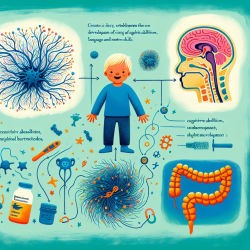Understanding the Impact of Caregiver Relationships on Quality of Life
The recent study titled "Impact of care–recipient relationship type on quality of life in caregivers of older adults with dementia over time" offers groundbreaking insights into how different caregiver relationships affect the quality of life (QoL) for those caring for people living with dementia (PLWD). As practitioners in the field of speech-language pathology, understanding these dynamics is crucial for designing interventions that improve caregiver outcomes.
Key Findings from the Study
The study utilized longitudinal data to examine how different caregiver relationship types—spousal, adult-child, "other" caregivers, and multiple caregivers—affect QoL over a two-year period. The results showed that:
- Spousal caregivers face a higher risk of negative emotional burden (NEB) and social strain (SS) compared to "other" caregivers.
- Adult-child caregivers initially showed higher social strain, but this was not significant after adjusting for socio-demographic factors and dementia status.
- The positive emotional benefits (PEB) did not significantly differ based on relationship type.
Implications for Practitioners
Understanding these findings can help practitioners tailor interventions to specific caregiver groups. For instance, spousal caregivers may benefit from targeted social support and stress management programs. Here are some actionable steps:
- Provide Tailored Support: Recognize that spousal caregivers may need more emotional and social support due to their higher NEB and SS.
- Consider Socio-Demographic Factors: When designing interventions, consider the caregiver's age, gender, and living situation, as these can influence the caregiving experience.
- Promote Positive Aspects: While PEB did not vary significantly, encouraging caregivers to focus on the positive aspects of caregiving can improve overall QoL.
Encouraging Further Research
While this study provides valuable insights, it also highlights the need for further research. The limited number of observed time points and the short follow-up period suggest that more extensive longitudinal studies could provide a deeper understanding of how caregiver relationships evolve over time.
Conclusion
The study underscores the importance of considering the caregiver-recipient relationship type when assessing caregiver QoL. By tailoring interventions to specific caregiver needs, practitioners can significantly improve the outcomes for both caregivers and PLWD.
To read the original research paper, please follow this link: Impact of care–recipient relationship type on quality of life in caregivers of older adults with dementia over time.










